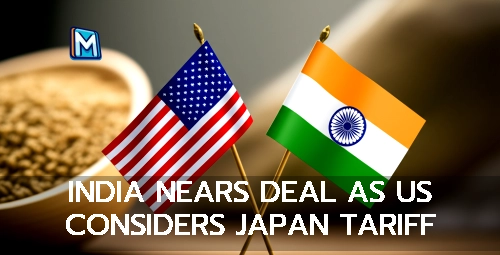The trade landscape has been marked by uncertainty in recent times, with countries imposing tariffs on each other's goods. In a significant development, Reuters reported that US President Donald Trump has indicated that the United States may soon reach a trade agreement with India. However, this optimism is tempered by the possibility of the US not being able to finalize a deal with Japan.
The prospects for a US-India trade deal are looking up, according to Trump. Speaking to reporters aboard Air Force One, he noted that India may be ready to reduce trade barriers for American companies. While India has traditionally been resistant to opening its markets to other countries, Trump suggested that if India agrees to open its market to the US, a deal to lower tariffs could be achieved.
US Treasury Secretary Scott Bessent confirmed that the US and India are close to finalizing an agreement to reduce tariffs on US goods entering India. This development is significant, as it would help India avoid a previously announced 26% tariff set to take effect on July 9. The avoidance of this tariff is crucial for India, which has been working hard to finalize the deal before the deadline.
In contrast, the prospects for a US-Japan trade deal are looking bleak. Trump expressed dissatisfaction with the trade negotiations held on June 30 and July 1, citing Japan's refusal to import US rice despite facing a rice shortage. As a result, the US will send a formal notice to Japan stating that tariffs on Japanese imports will be raised to 30%–35%, up from the previously announced 24%.
บทความที่เกี่ยวข้องและแนะนำ:
- 🔥 ยอดนิยม: นักมวยกุนขแมร์ลั่น พร้อมรับใช้ชาติ
The Trump administration has made it clear that it is prioritizing trade deals with countries like India over Japan in these final days before the new reciprocal tariffs come into effect. This shift in priorities may have significant implications for global trade, as countries scramble to finalize deals and avoid the imposition of tariffs.
The US has successfully reached a trade agreement with only one country—the United Kingdom—so far. The clock is ticking for other countries, including Japan, which faces the prospect of increased tariffs if it fails to reach an agreement with the US. With the deadline for the new reciprocal tariff measures looming on July 9, the pressure is mounting for countries like India and Japan to finalize their trade deals.
In conclusion, the trade landscape is marked by uncertainty, but there are signs of hope in the form of a potential US-India trade deal. However, the prospects for a US-Japan deal look increasingly bleak. The Trump administration's priorities have shifted, and countries must scramble to finalize deals before the deadline. As the world watches with bated breath, the stakes are high, and only time will tell how this unfolding drama plays out.
MagazineASP













